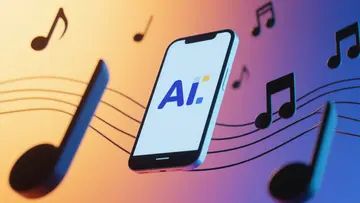Introduction: What Makes AI Genre Detection Possible?
Ever wondered how platforms like Spotify or LANDR seem to magically know your music’s genre—sometimes better than you do? That’s not guesswork. It’s the work of AI music genre finders—advanced algorithms trained to analyze sound and classify it by style.
If you're a musician, beatmaker, or audio enthusiast, understanding how AI music genre finders work isn’t just fascinating—it’s essential. Accurate genre tagging affects how your music is discovered, playlisted, and even monetized.
This post breaks down how genre detection algorithms operate, which AI tools are currently best-in-class, how reliable they are, and what this means for artists in 2025. Whether you're creating lo-fi hip-hop, cinematic orchestration, or hyperpop, genre tagging matters.

The Core Technology Behind AI Genre Finders
AI music genre finders rely on a mix of machine learning, digital signal processing, and neural networks. The basic process usually includes the following steps:
Feature Extraction
AI first analyzes audio features like:Tempo (BPM)
Key and scale
Harmonic content (chord progressions)
Melodic contours
Spectral characteristics (brightness, attack, decay)
Rhythmic patterns
Timbre and instrumentation
Vectorization
These features are turned into numerical vectors, so AI can compare your track to massive databases of labeled genres.Model Matching
A trained classifier—like a convolutional neural network (CNN) or recurrent neural network (RNN)—compares your track’s profile with known genre profiles.Prediction and Confidence Scoring
The system outputs the most likely genre (e.g., “trap,” “ambient,” or “house”), often with confidence percentages.
This whole process can take less than a few seconds—yet is powered by models trained on millions of labeled tracks from streaming platforms, digital music libraries, and open datasets like GTZAN or Million Song Dataset.
Real AI Tools That Help You Find Your Music's Genre
Here are some top tools using this tech today:
LANDR
Besides mastering, LANDR analyzes your track and recommends genres for distribution or playlisting.
Works well with EDM, hip-hop, and indie.
Offers real-time preview feedback.
Website: landr.com
Spotify for Artists
Spotify’s internal genre classifier helps determine where your track fits into its vast playlist network.
You can’t directly control it, but observing it helps you understand how Spotify hears your sound.
AIVA
AI composition tool that classifies music by genre based on mood, instrumentation, and structure.
Especially good for classical, cinematic, and ambient genres.
Essentia
An open-source C++ library for music analysis and audio feature extraction.
Developers and researchers use it to build genre detection models.
Boomy
Automatically generates and tags music with a genre label after creation.
Helps new creators push out tracks quickly to TikTok or Spotify.
Why Genre Accuracy Matters in 2025
Playlist Algorithms: Most algorithmic discovery tools (like Discover Weekly) use genre metadata.
Search Optimization: Listeners often search by genre tags—bad tagging means lost plays.
Licensing and Sync: Supervisors for ads and film search libraries based on genre.
TikTok/IG Reels Sound Discovery: If your genre tag is wrong, your track may never hit the right niche.
A genre mismatch can mean the difference between going viral or being invisible.
Common Misclassifications: Why AI Doesn’t Always Get It Right
Even the best AI genre finders aren’t perfect. Here’s why:
Genre Overlap: A track with trap drums and melodic pop vocals might be labeled incorrectly depending on emphasis.
Experimental Styles: AI struggles with non-traditional music that doesn’t fit known categories.
Low-quality Audio: Distorted or unfinished tracks can confuse feature extractors.
Training Bias: If the dataset used to train the AI underrepresents your genre (like vaporwave or afrobeats), it may misclassify.
How to Improve Your AI Genre Classification Results
Use clean, well-mixed tracks.
If possible, stick to one genre’s conventions per track.
Label your audio metadata (ID3 tags) correctly before uploading to distribution platforms.
Use tools like LANDR or Boomy that let you manually override or refine the genre suggestion.
Avoid uploading unfinished demos for classification purposes.
Real Stats: How Often AI Gets It Right
Spotify’s genre classifier has an accuracy rate over 88% when tested on mainstream genres.
LANDR's genre tool reports over 90% user agreement on suggested genres.
Studies using the GTZAN dataset show ML models like CNNs can hit 85–95% accuracy, depending on complexity.
That said, niche subgenres still see a misclassification rate of 20% or higher, particularly when instrumentation overlaps.
FAQs: How AI Music Genre Finders Work
Q1: Are genre finders free to use?
Some tools like Boomy and open-source models are free. Premium tools like LANDR require a subscription.
Q2: Can AI detect sub-genres like synthwave or lo-fi trap?
Yes, but accuracy varies. AI is getting better at sub-genres, especially those that are well-tagged in training datasets.
Q3: Do genre labels from AI affect royalties?
Indirectly, yes. Better genre tagging improves placement on DSPs, leading to more streams and royalties.
Q4: Can I retrain my own AI genre classifier?
If you're a developer, you can use tools like Essentia + TensorFlow to build or fine-tune models using your own datasets.
Q5: What’s the best AI genre finder for beginners?
LANDR (for creators) and Boomy (for casual users) are very beginner-friendly and visually intuitive.
Conclusion: Trust AI—But Validate With Your Ears
AI music genre finders offer creators a powerful edge in today’s digital music world. Whether you’re pitching your tracks to playlists or trying to understand your own musical identity, these tools save time and enhance reach.
Still, genre is both art and science. Don’t rely solely on what the machine says. Use it as a guide, then follow your creative instincts. The best genre tag is one that helps the right audience find your sound.

